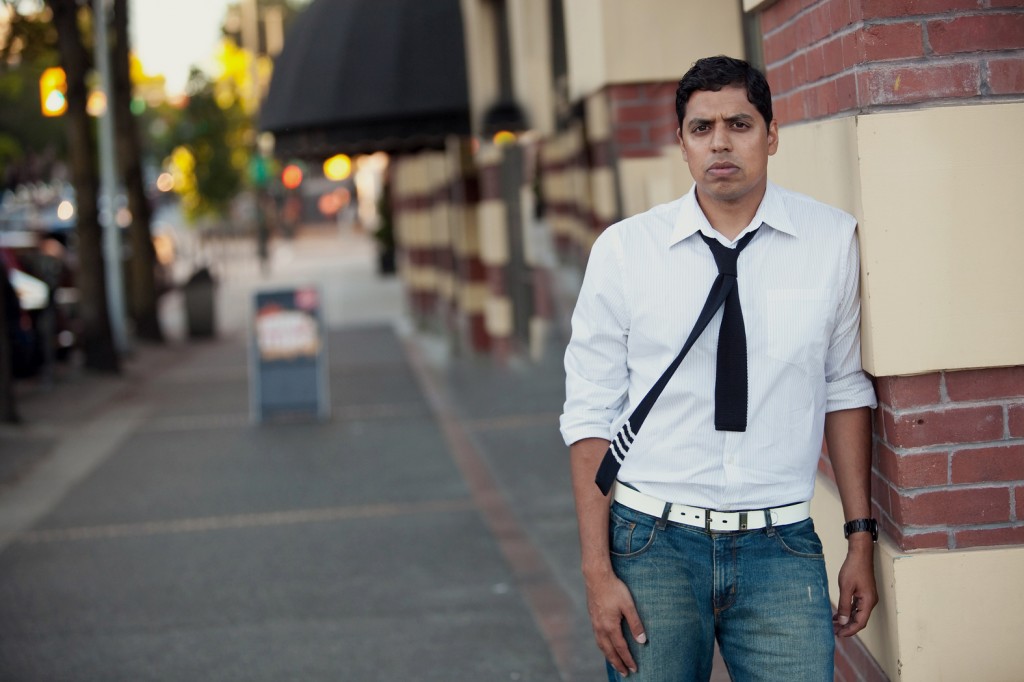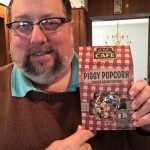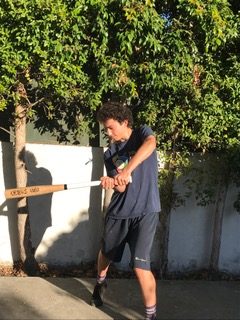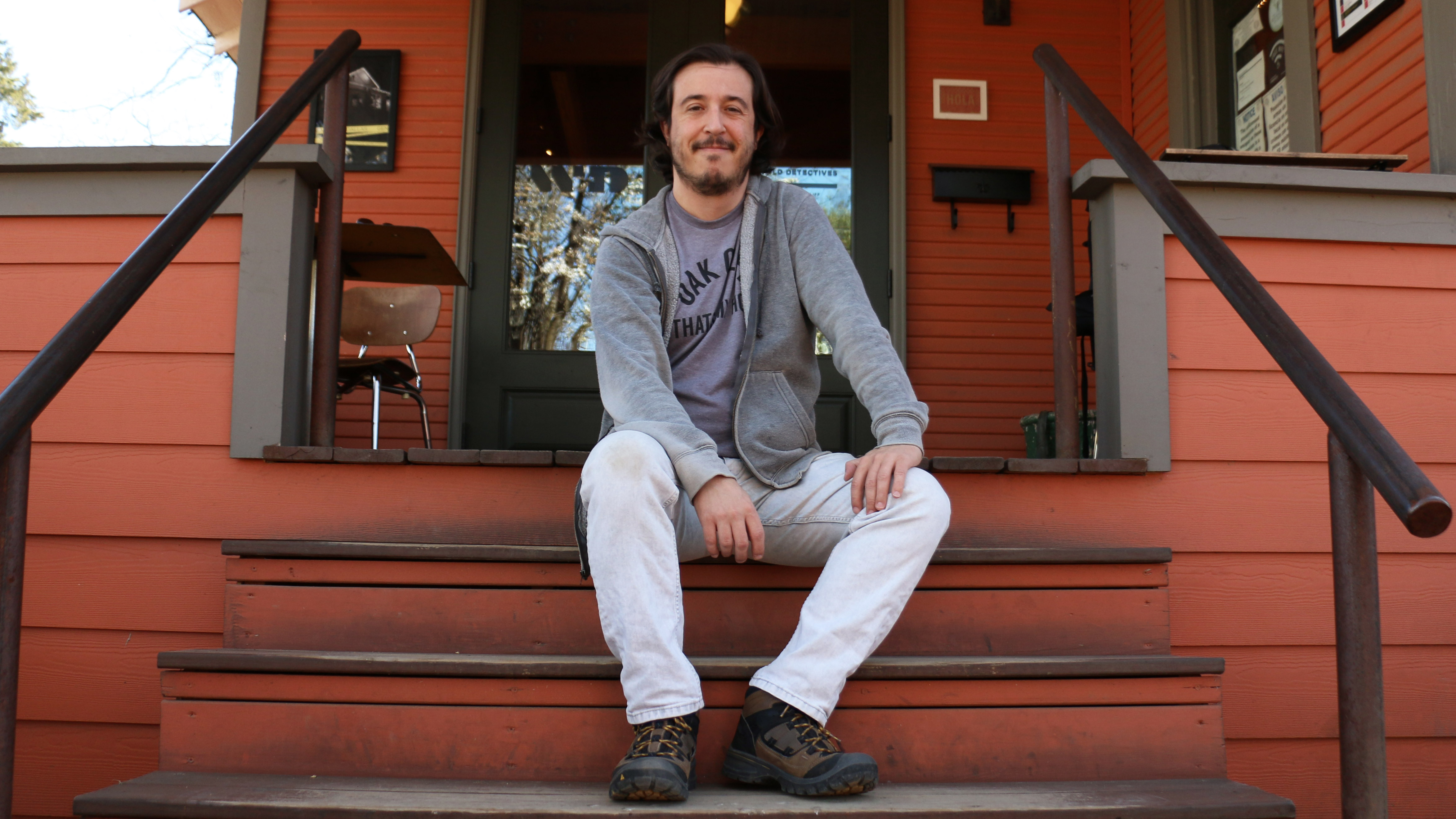
It was a joy to talk with Pavel Bains, founder of a new iPad app for children called Storypanda. There are so many interesting facets to Pavel, whether it’s his love for some old school music like New Jack Swing, his work experience at Disney Interactive and for a Vancouver restaurant group or the many lessons sports taught him about competition and how it honed his own competitive spirit. Pavel loves competing in this game of life and a couple minutes on the phone with him exposed his enthusiasm and I think I’ve been infected. That’s a good thing. I hope you can catch some of his start up spirit by merely reading his words. After reading the interview, Pavel would love to read your comments and I bet he’ll respond. He’s just that kind of guy. Now, onto the interview
Of all the different types of startups you could have been involved with, why did you choose a family friendly startup such as Storypanda?
I grew up on video games and comic books and a lot of the guys I grew up with chose careers to go into video games, making them, working for these companies. The past five years, all the guys I knew, who were in games, started having kids. You get to the point where you’re playing Call of Duty and making games like that and you’re just offing people the entire time. You eventually realize, “I really don’t want to make these kind of games any more.“
Also, the development cycles of producing those types of games was about three years. Then we started seeing what our kids were doing on the iPad and we saw this paradigm shift. I thought, “I want to do something I can enjoy, creating a brand and making something and enjoying it with my kids, the way I enjoyed Disney type entertainment when I was a kid growing up.”
You worked at Disney Interactive, right?
Yes I did.
What was your position there and how did you get the job?
I was always into interactive entertainment, video games and everything. I knew one of the vice-presidents – Howard Donaldson, VP of operations for all of the internal studios and financial operations. He suggested I come over to work with him at Disney to basically do the financial management of all their internal studios, and there were six at that time.
How long were you there?
I was only there a year. The reason I left was two-fold. I could see a paradigm shift fast approaching. I didn’t see console games as a long term endeavor with the 2-3 year development cycles and the shift toward mobile and tablets. I was also presented with an opportunity to be the CFO/COO at a smaller studio. For me, I would rather fully run a studo and know the entire workings of it than be a small cog in a big factory. It was more entrepreneurial for me to go to ThreeWave Software. I was there for two years. And as the overall video game industry changed, with console titles selling less and less except for blockbuster titles, we made a conscious decision to divest ourselves of the business before we suffered the fate of other small studios who were shutting down or running out of money. Around that time, I decided to make my own business and here we have a new space, that’s Storypanda.
How would you explain Storypanda to a family with small children who you might in an elevator, what’s your elevator pitch?
I’d say we’ve developed Storypanda for the iPad. It will allow you to read an interactive book, create your own version of that book you just read, and then share it amongst your friends and family. You can share it in such a way that if your daughter creates a book and her grandparents log into Storypanda, they would see the message floating that little Julie just created a personalized book for them.
How does a Storypanda user create their own book? Is it just by using the characters in the story, new ending or is there some other way to customize your titles?
We look at each book that we create, or books from our partner authors, as a mini story template. What we’re motivating readers to do is take a story and start swapping up characters we provide, assets in the background, change the text, and essentially, re-make the same book with their own style. The reason we give guidelines is pretty simple. We’ve found if you give people a blank slate, it actually goes against creativity. If I give you a blank piece of paper right now and say , “Hey, make up a story,” you’ll have a frustrating experience just trying to get going. Now, if you give people constraints and say, “Hey, here are the rules and paramaters,” They will most likely respond, “Okay, now I know how to play within this.” Guidelines can actually encourage more creativity.
Can you tell me about some of your early experiences that have pushed you in the direction of having such a great entrepreneurial spirit? Was your family influential in this?
Nothing in my family helped push me in this direction. Recently, I was joking with my Dad that if anything, my family background probably held me back. My dad emigrated over here and worked a good job and the mindset in my family was grow up, get a good job and get another safe job and keep going. I’ve always liked the challenge of being an entrepreneur. I’ve had a number of opportunities at big companies and I always end up thinking I can go back to that if I want. The big question I’ve always asked myself has been, “How can I challenge myself?” I guess it just comes down to my dad coming to this country with basically nothing and I know I’ll personally probably never fall into that situation so I might as well shoot for the stars and see what happens.
Having worked at Disney and other good companies, my partner and I believe we’ve done all this work, we know how to build a brand, we can move faster, let’s execute. It’s really just a personal belief of goal setting and saying, “I can do this.”
If it wasn’t family, were there other experiences that helped create in you this entrepreneurial spirit? Just looking for a motivating factor, was there one person you can point to who helped set you on this path?
I grew up on video games and watching action movies in the 80s and 90s. We’re all familiar with Jerry Bruckheimer and seeing Top Gun when it came out. I thought making movies like that would be cool. Then, when I got older and attended university, I thought I had a better chance at running a video game studio than running a film studio, so I started going down that path.
On the entrepreneurial side, there was Peter Bonner, the CEO of a restaurant chain I worked for who was one of the biggest restauranteurs in Vancouver through the 70s and 80s. After school, I worked right beside him, and just getting that mindset of him building his chain up from nothing and how he looked at each restaurant as design, as a product, that really got the entrepreneurial spirit into me. I could have been there forever but I had to do something on my own that was more interactive. I think that experience inspired me a lot. Seeing guys like that made me think if they could do it, so could I.
What restaurant chain was that?
The chain was called Spectra Group of Great Restaurants. They had four different chains. When I was there, they had Milestones, The Boat House, The Bread Garden and Macaroni Grill. While I was there , I think we had over 40 different restaurants.
You’re a parent now, aren’t you?
Yes.
Before beginning Storypanda, what did you read your children? And how did you read it to them?
I read them traditional books, ranging from CURIOUS GEORGE to CAT IN THE HAT. I always liked to lean on the things that I grew up reading. My daughter is four now and she finds WHERE THE SIDEWALK ENDS by Shel Silberstein absolutely hilarious. Once the iPad came out, I’d look at interactive books on there and saw some good Dr. Suess titles. They looked good, the resolution and the animation was fine. But after going through those interactive books, I thought, “How can we make this experience better?” because I found my daughter was reading the CAT IN THE HAT book and would rarely go back to it.
I also noticed that the interactive book companies didn’t do a very good job of promoting their next titles and the quality differed with each one. With our concept, we wondered, “How could we create a brand trust where parents could open up the Storypanda app every time and know there would be a new book every month or every couple of weeks that was always good?” So our goal was to build that trust and parents wouldn’t have to wonder, “Should I get this or not?” because with so many apps, you don’t know which ones are good.
Will you ever read your children a traditional book again?
Oh yeah, it’s probably an easy split between the two (interactive and traditional books).
My next question was going to be about Storypanda and other similar apps having a goal to put traditional publishers out of business, but after hearing you speak, that’s probably not your goal.
No. Our goal is to create new compelling intellectual property and characters we can tell a good story with. As a brand, we’re focused more on collaboration and co-creation. It just happens that interactive books is the first place we thought we could go.
Is there any way you can take your technology and add it to a traditional book?
We’ve been talking to some publishers who love how our technology works and we’ve discussed white labeling our entire tech back end so they can brand it themselves and put out their own platform where people can read, create and share their books. Or we could get their specific books and put them through our channel.
We’d love to take an author like Robert Munsch, who has fascinating characters and a unique voice for his stories and provide him with the Storypanda platform. Imagine allowing kids to choose their own Munsch adventure, swapping out his characters. I think Storypanda would be a good medium for him.
In Canada, what is the entrepreneurial scene like there in British Columbia? I know it’s not going to be the same as it is in Silicon Valley but are there cultural differences there in Canada?
In Vancouver, I’d say there’s a different mindset here. With us (Storypanda) being in 500 Startups, we’ve been down to Silicon Valley and the experience is different. There, they believe that you build it, you’re in here, you’ll figure it out, shoot as big as you can. Over here, people are a bit more risk averse. For example, if you’re talking to a potential investor and you don’t have an answer to a question, they see that as bad. But in the valley, if you don’t have an answer, they respond with, “You know what, you’ll figure it out. You shouldn’t have all the answers. Focus on what you’re doing and execute.” There’s also a big supportive eco-system down there that you can lean on. You’re now getting more startups here in Vancouver and I think it’s going to take a couple big successes over the next 5-10 years to allow everybody’s mindset to shift into a “Valley” kind of mindset. And then you’ll see people really shoot for bigger things.
Do you see yourself moving Storypanda to Silicon Valley?
We’re there right now. We have an office set up there because of the investment we have through 500 Startups. We’ll be down there but we’ll always keep the base here in Vancouver. The reason is because the interactive talent here is really good. That’s because we have a really big video game industry with Electronic Arts, Activision and many indie studios here. So we’ve got this big talent pool so I believe for what we’re doing as a creative and technology company, our base is right here and the talent is right here. Instead of having to move to the valley and say, compete against Facebook, Google, Apple and everybody who keeps taking talent, I’ve got it right here.
Is all of your content for Storypanda, your animation and writing, all done in house? Or are you looking to hire talented children’s writers and illustrators?
About half of our stories will be in house and we want to do half with select authors. And by “select” we mean they have to fit the right art style we’re shooting for, it’s got a bit more edge to it, a bit more polish, those sorts of things.
What is the age range for Storypanda titles?
What we’re shooting for is 2-8 year olds and the stories fit different needs for different ages. For example, my two year old likes to sit and switch the characters in our stories. My four year old will sit there and create a different ending for each story. My co-founder’s eight year old nephew, he’ll sit there and be very cerebreal in how he puts the entire process together.
On Storypanda, how do you see the stories being grouped for various ages?
I would say the groupings would be 2-3, that’d be one and 4-6 would be another group. That would be our core. Those are the ones who are beginning to read. They have a better understanding and they are becoming very adept at the iPad. They want to create something. Finally, 7-8 year olds would round out our audience.
You have a strong background in gaming, do you plan on creating games for Storypanda or are your interactive offerings like a game right now?
The Storypanda experience was designed to be almost like a game for reading. But as a company, with our vision overall, we want to be for software, what Leapfrog was for hardware. We want to have games that have an undercurrent of learning and education. Our goal is not to hit users over the head with being an educational type of app. With this platform, we’re going after establishing our user base, building brand trust, and then move that over to the next thing we want to do, mobile games and possibly utility apps designed for kids.
Not just with Storypanda, but with all of life, what keeps you motivated when it comes to any of your endeavors? Would that be a higher power, pride in your work, financial gain? Is there one thing that motivates you?
Financial gain is never really it. I’ve always thought that in whatever you do, if you follow your passion, financial rewards will come. I kind of look at all this as a game and how it’s played and building a brand and seeing what others have done, whether on the local front in Vancouver, nationally or with the big brands. I love this game and I want to compete. I know I can beat the game. I think that’s really the motivating factor.
Growing up, our dad had us in sports, challenging us. I ran track up until the university level. So it’s all about pushing yourself harder. When I ran track, a lot of the times I was just racing against the clock. When we used to train, it was all about getting yourself into a comfort zone, and then you plateau and then you have to push a bit harder. You only get better when you push yourself out of that comfort zone. I think it’s inherent in me that I have to apply that to everything I do.
How long have you been working on Storypanda?
We started development in May 2011. We broke it into stages because we had self-funded it. We came up with a concept and once that was done. We then hired a coder and started building Storypanda. There was a lot of user testing, seeing how people were interacted with the product and fixing problems. It’s been a little over a year.
How many people did you start with?
We had one developer at the beginning and even right now, we just have one developer, one artist, my partner James who is head of product, design and creative and I handle the business side. The coder for what we’ve got now, our programmer, he built a really good platform that can scale well and he created a nice scripting language for when we get new books and authors. We’ll be able to turn them around relatively fast.
What is a typical day like in the life of a startup founder? Maybe describe one from today and from when your first started.
Things have changed quite a bit from the beginning. When we first began, it was more concept heavy, and a lot of brainstorming, thinking, and because we weren’t raising capital, it was more about the product side and what worked and what didn’t and sort of just fleshing all that out. Then we got to the point where the product was ready, so it was then about branding and launching our website, networking. That was the middle stage where it’s having a product, we’re networking and just getting known. Now, for the past couple months, I don’t focus days on one particular thing. You’ve got to look at it all at the same time. So I look at my core functions and 30% of my day is related to business development – establishing new partnerships, following up with authors or people we’d like to work with. Another 30% would be on the raising capital side, maintaining those networks, talking to people. 30% would be marketing, spending time with people like yourself, PR, peer marketing with a product or optimizing the website, going through the product descriptions and things like that and the other 10% would be other operational aspects.
I remember Jack Dorsey from Twitter and Squared wrote about six months ago how he described his day. It was funny, because he’s running two different companies, and he has a schedule just like that, he’s not just running around everywhere.
Can you tell me when you will know Storypanda is a success?
The first thing will be, what we define as getting product market fit. That will be seen in a good number of users reading the books, X number are creating books and X number are sharing them. Once we establish product market fit, we just need to know how to scale that to a bigger size. That’s our first success measurement. One goal, we’ve been told is to ask your users, “How would you feel if you were not able to use this product every day?” If 40% of them say they’d be disappointed, then you’ve got product market fit. Like in sports, you create mini-goals, That’s our first goal, hitting that.
What are your keys for other people to become successful at startups? What would be some things you would suggest they do to become a success?
I think from the beginning, write down what is core to the company and your foundational principles, not your design pillars, but your business pillars. Once you put that together, it allows you to filter out stuff that could be distracting. For example, our mantra is “Connecting Families Through Storytelling.” So anytime some feature or business venture comes our way, we have to ask if that helps connect families through storytelling. If it doesn’t, then we’re not going to spend any time on it. What your brand stands for is really big. What somebody told me a while ago, a serial entrepreneur, he said the product you create per se, is not the product. It’s everything. Take a car for example. A BMW and an Infiniti are pretty much the same thing. They are both luxury cars. But the website, the brand name, the look, the communication, the ads, that’s the entire product. It’s everything tied in together. So I think, a lot of startup guys, all they figure out is, product as what people define as a product, and not thinking about the rest of the company and business and what it stands for.
I think the keys to success are really defining what is core to your brand or company and on the product side, it’s getting started, right away, or you’ll talk yourself out of it. For us, we talked to everyone we knew about our idea just to get feedback. I know that a lot of people don’t like to talk about their idea because they’re afraid somebody is going to steal it, but we took the other route. If somebody’s going to steal it, an idea is just an idea, you’ve got to execute on it anyways. And others don’t know what’s going on in my head or my partner’s head.
Thank you Pavel. That’s a good way to end our interview today. “Just go for it.” You’re right. Sometimes we can talk ourselves out of pursuing our goals and dreams. Thank you so much for sharing your passion about Storypanda and about the entreprenurial life. I know my readers have enjoyed it. But first I’ve got just two more short questions.
First, why Storypanda? Why not Storywombat or Story Platypus? No, seriously, why Panda?
My co-founder James’ young nephews would pronounce my name as Panda. My young kids would refer to James’ beard as red fur. we had seen pics of these cute red pandas from China, so we went with Storypanda.
Second, if there’s anyone you’d like to see interviewed here at GotInterviews.com, who would it be?
I would like to see Dominique Leca, CEO and co-founder of Sparrow Mail, interviewed.






